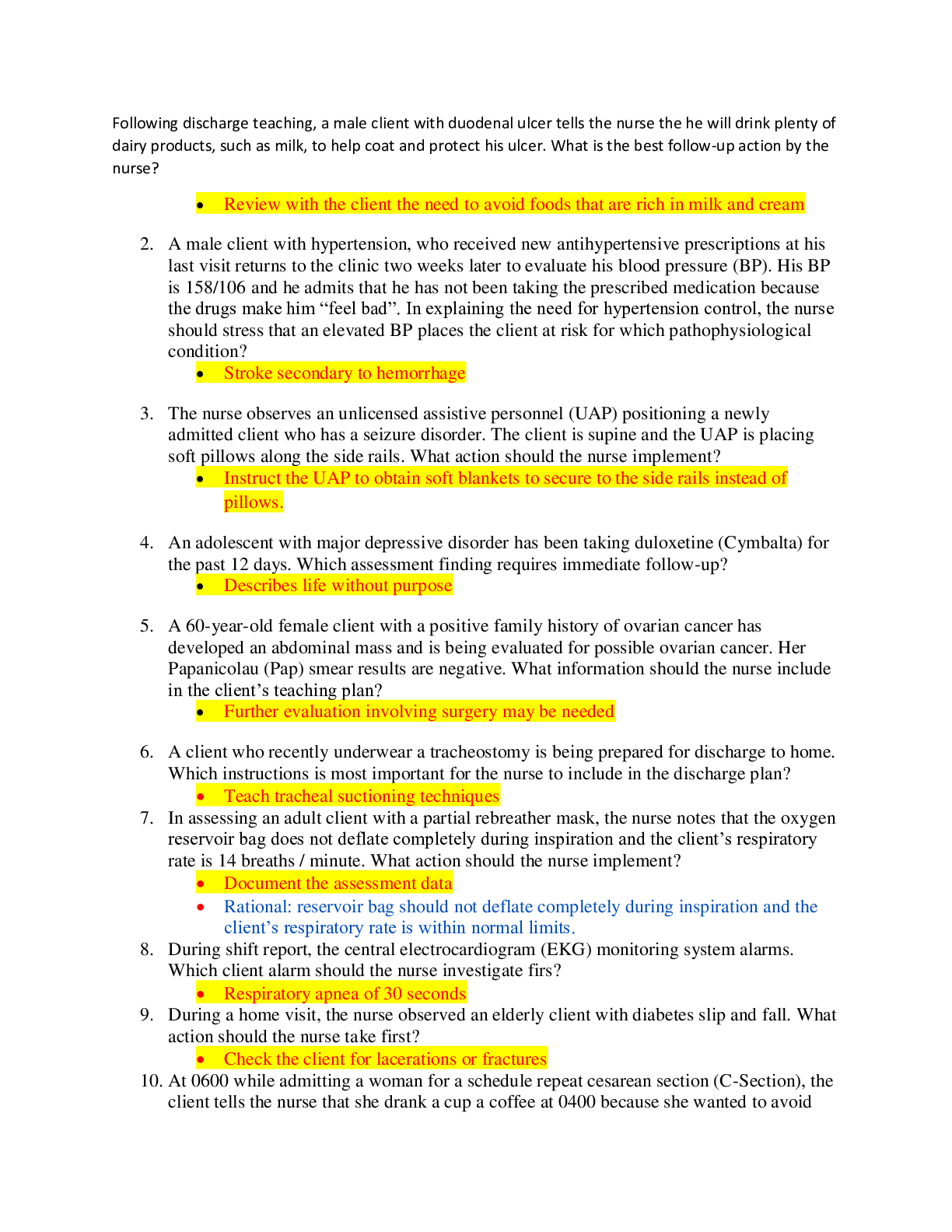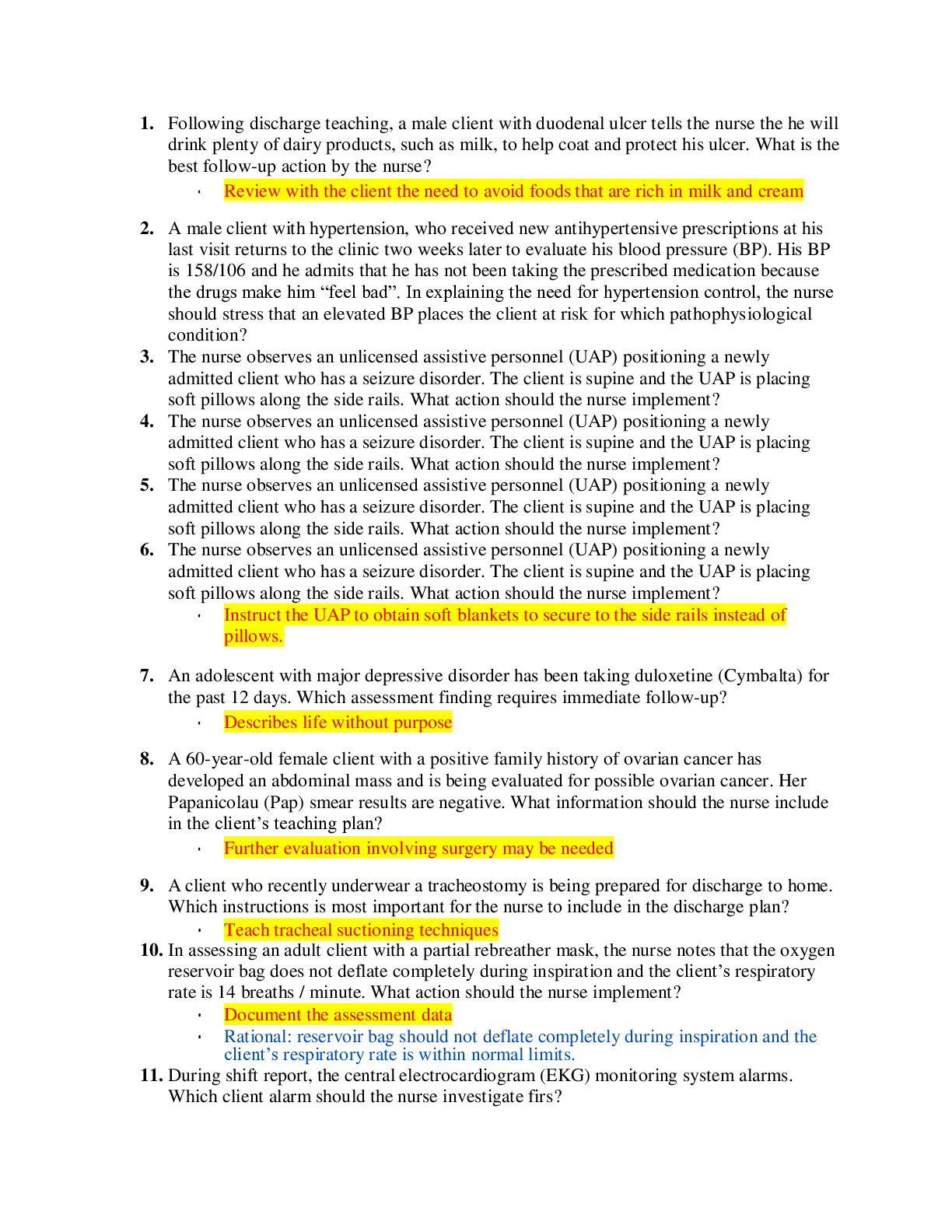*NURSING > HESI MED SURG > ACCT 1100MedSurg 2 HESI V1 (All)
ACCT 1100MedSurg 2 HESI V1
Document Content and Description Below
#1) A.E.D. Use When VF begins, the patient becomes faint, immediately loses consciousness, and becomes pulseless and apneic (no breathing). The desired outcomes of collaborative care are to reso ... lve VF promptly and convert it to an organized rhythm. Therefore the priority is to defibrillate the patient immediately according to ACLS protocol. If a defibrillator is not readily available, high quality CPR must be initiated and continued until the defibrillator arrives. An automated external defibrillator (AED) is frequently used because it is simple for both medical and lay personnel. Gather the AED or defibrillator before initiating CPR. Guidelines for CPR have changed from an ABC (airway-breathing-compressions) approach to the initial priorities of CAB (compressions-airway-breathing). When the AED or defibrillator arrives, do not stop chest compressions while the defibrillator is being set up. If trained to use the AED or defibrillator, apply hands-off defibrillator pads to the patient's chest and turn on the monitor. If the patient is in VF or pulseless VT, the immediate priority is to defibrillate! Defibrillation, an asynchronous countershock, depolarizes a critical mass of myocardium simultaneously to stop the re-entry circuit, allowing the sinus node to regain control of the heart. After defibrillation, CPR is resumed. CPR must continue at all times except during defibrillation. If a shock is indicated, issue a command to clear all contact with the patient and press the charge button. Once the AED is charged, press the shock button and the shock will be delivered. The shock is delivered through the patches, so it is hands-off defibrillation, which is safer for the rescuer. The rescuer then resumes CPR until the AED instructs to “stop CPR” to analyze the rhythm. If the rhythm is VF or VT and another shock is indicated, the AED will instruct the rescuer to charge and deliver another shock. Newer AEDs perform rhythm analysis and defibrillation without the need for a rescuer to press a button to analyze or to shock the victim. It is essential that Advanced Cardiac Life Support (ACLS) be provided as soon as possible. Use of AEDs allows for earlier defibrillation. Therefore there is a greater chance of successful rhythm conversion and patient survival. [Show More]
Last updated: 3 years ago
Preview 1 out of 83 pages
.png)
Buy this document to get the full access instantly
Instant Download Access after purchase
Buy NowInstant download
We Accept:

Reviews( 0 )
$17.00
Can't find what you want? Try our AI powered Search
Document information
Connected school, study & course
About the document
Uploaded On
Sep 10, 2021
Number of pages
83
Written in
All
Additional information
This document has been written for:
Uploaded
Sep 10, 2021
Downloads
0
Views
168














 Test Bank.png)



.png)




